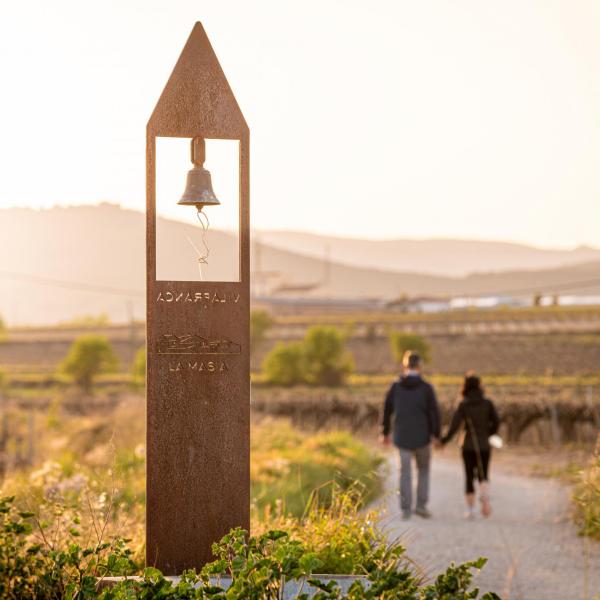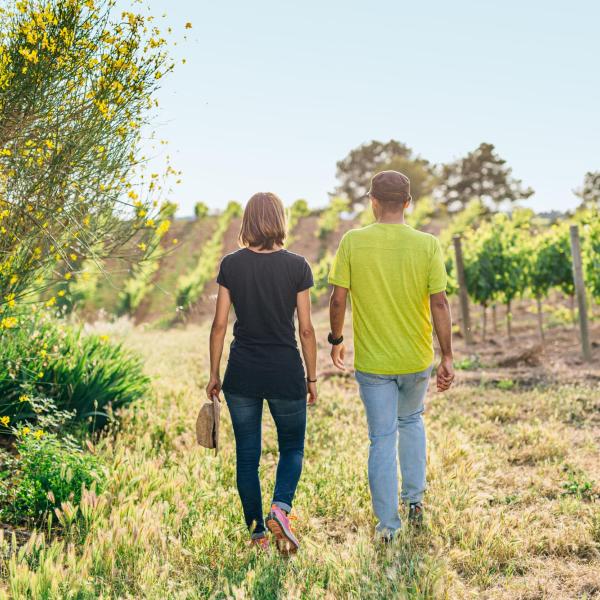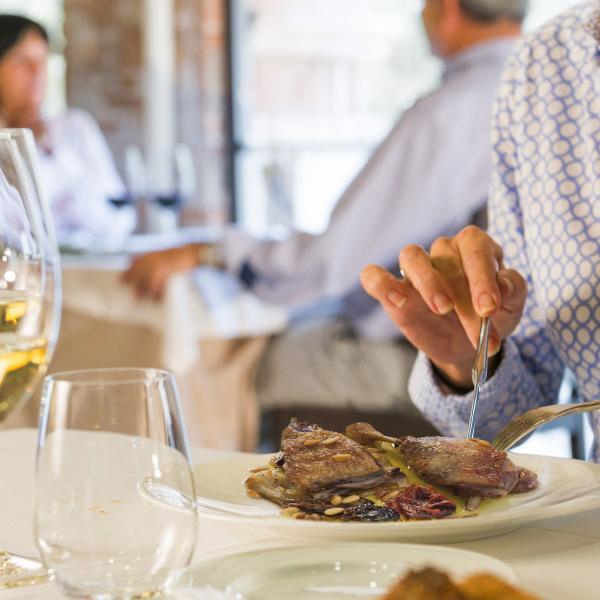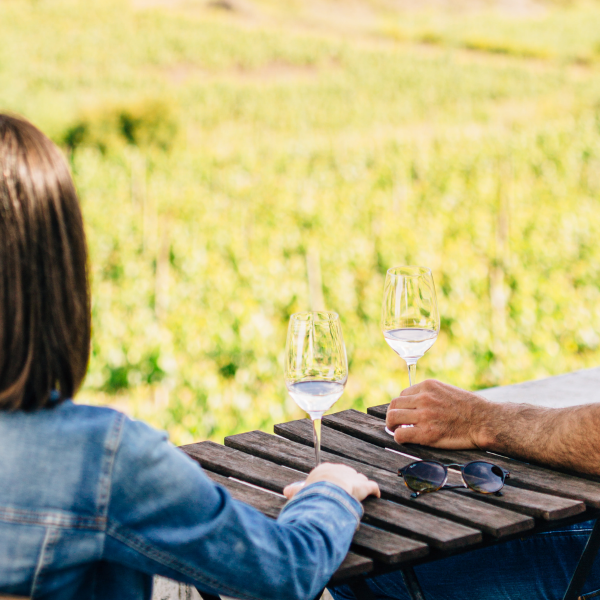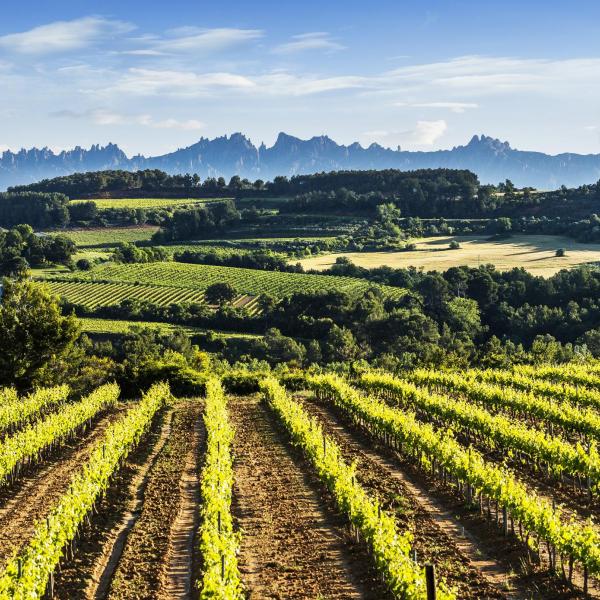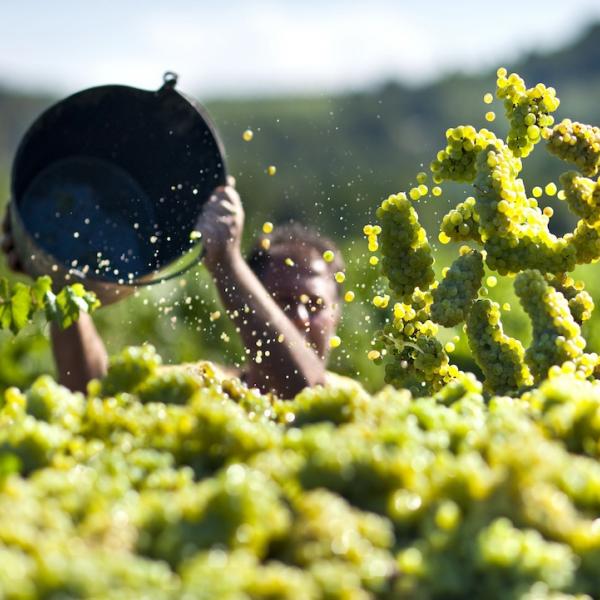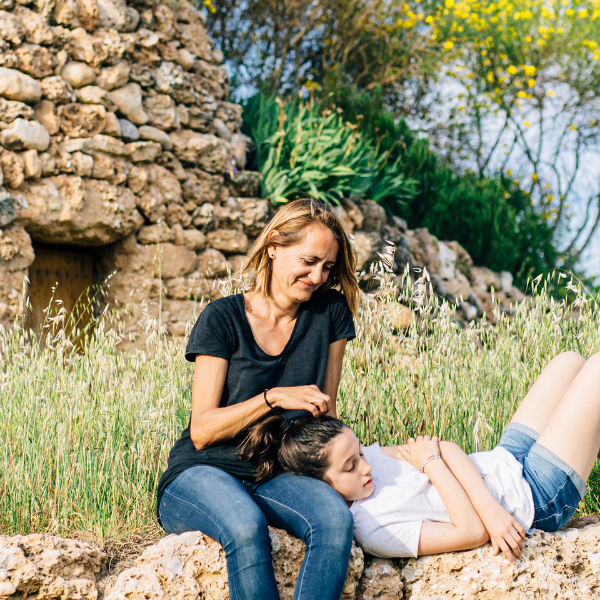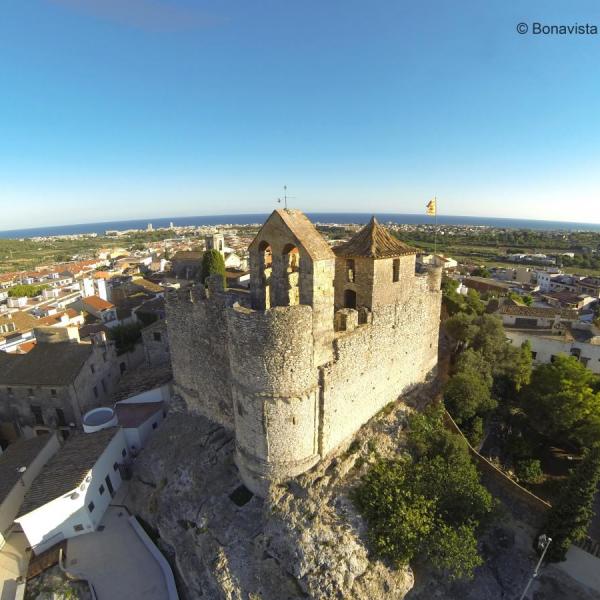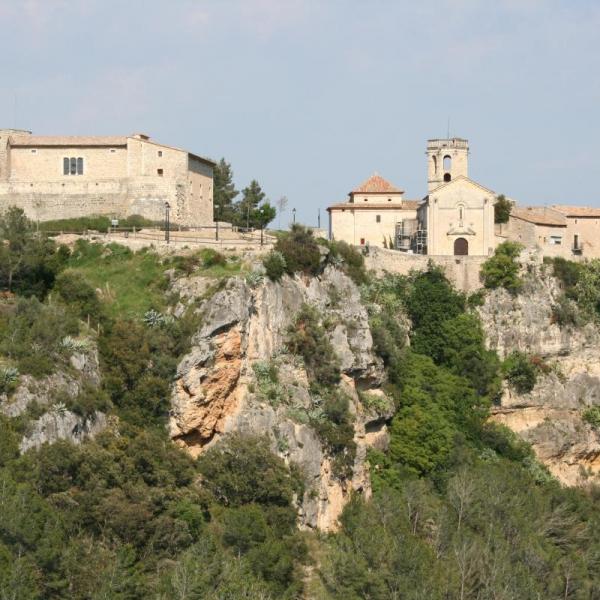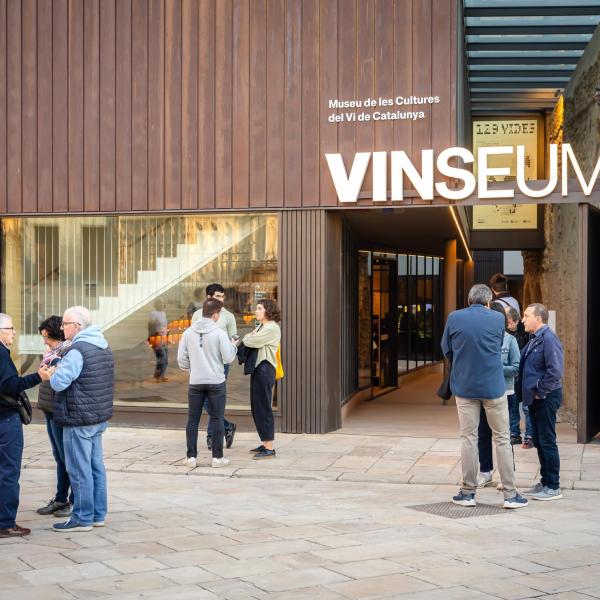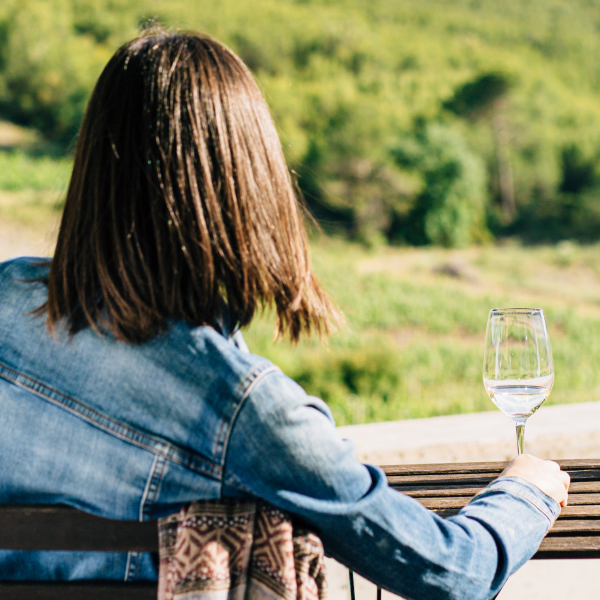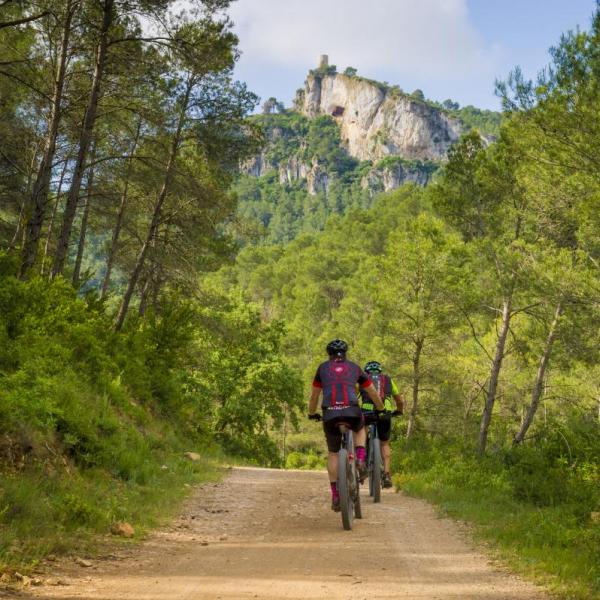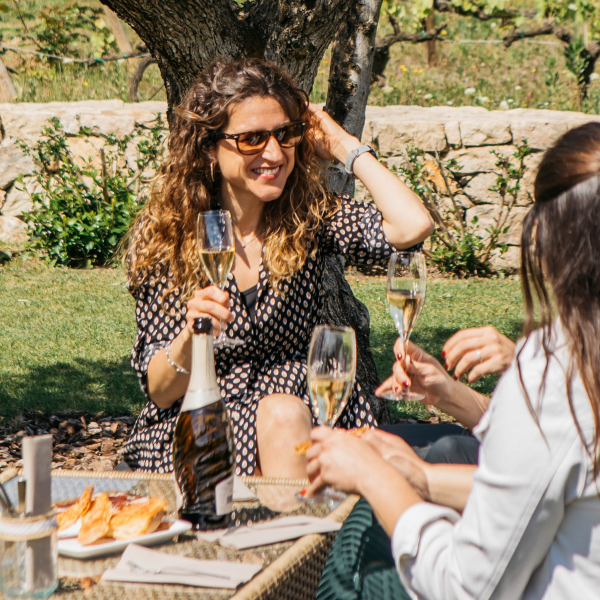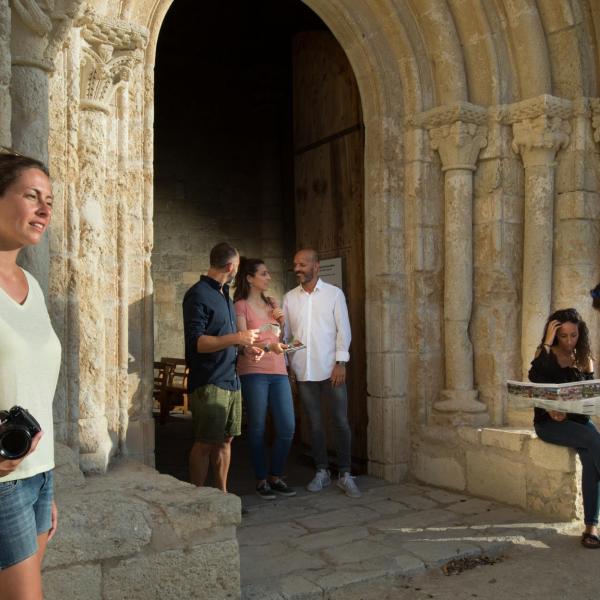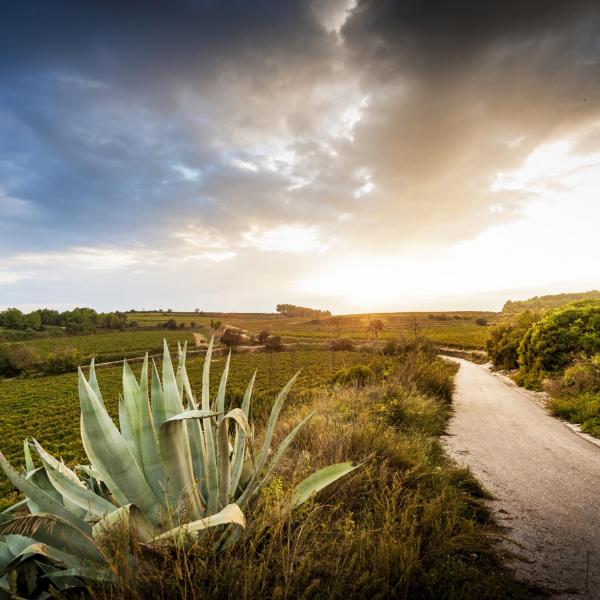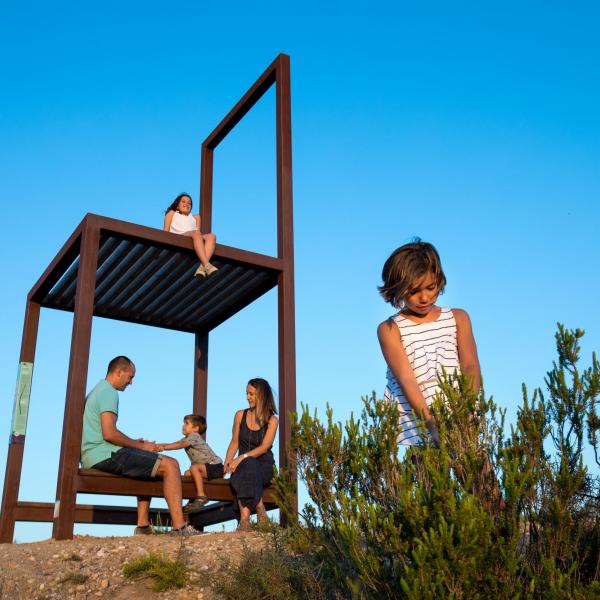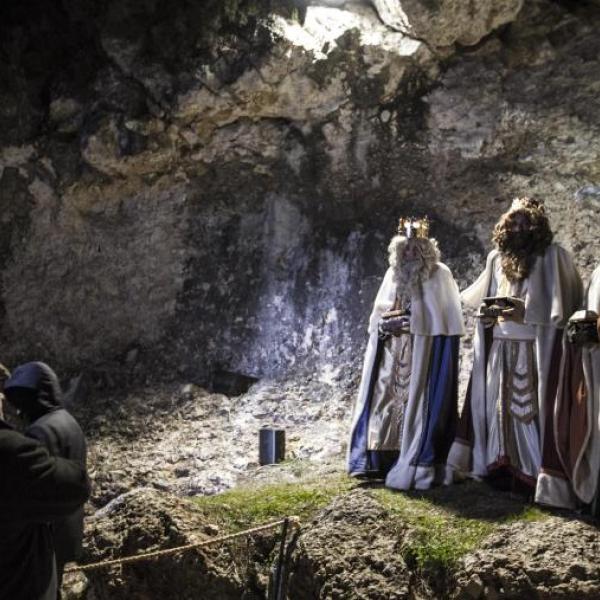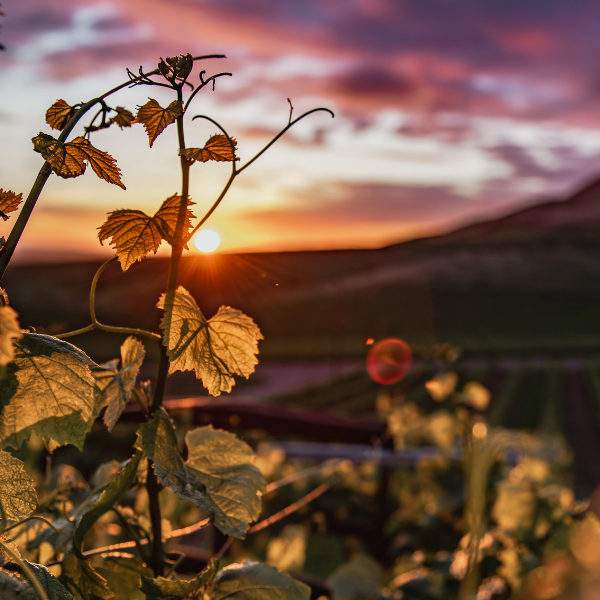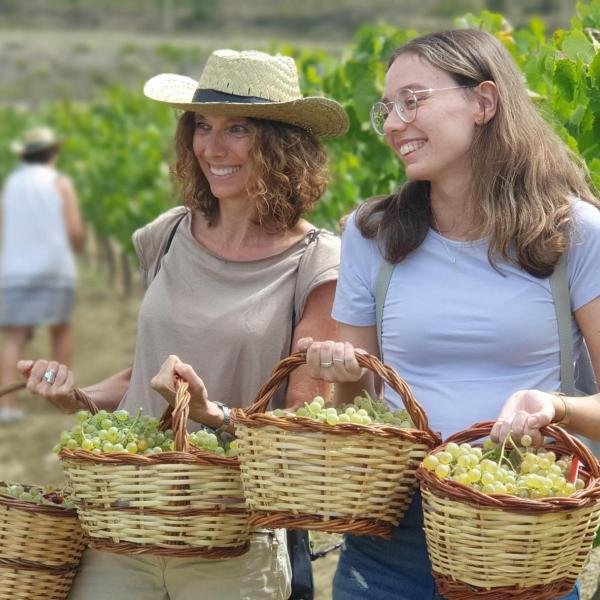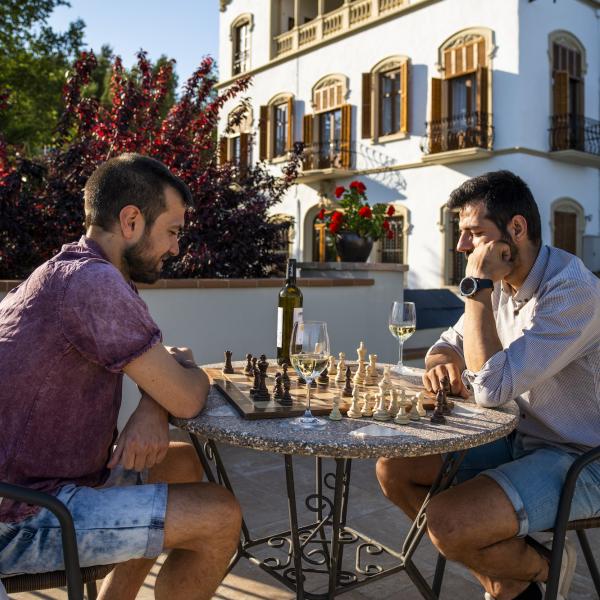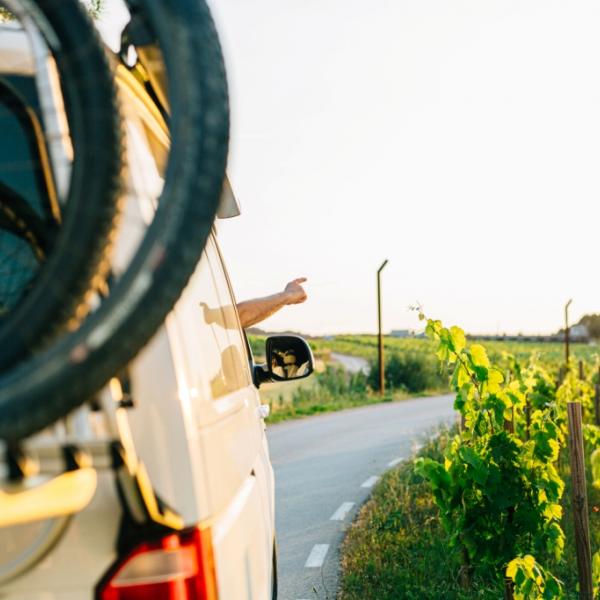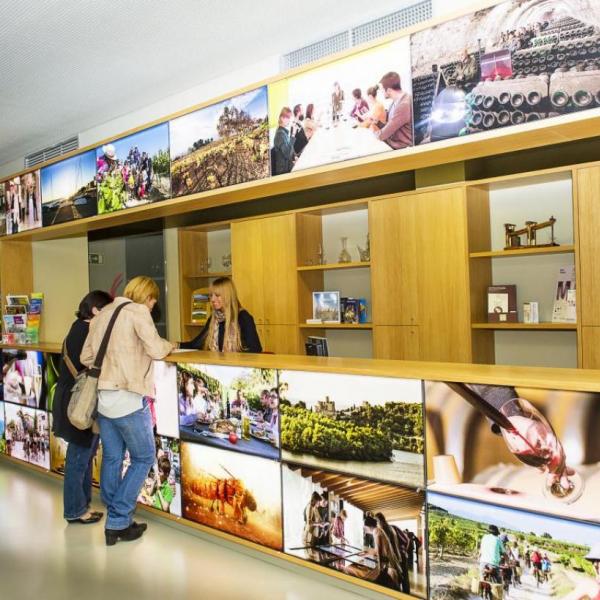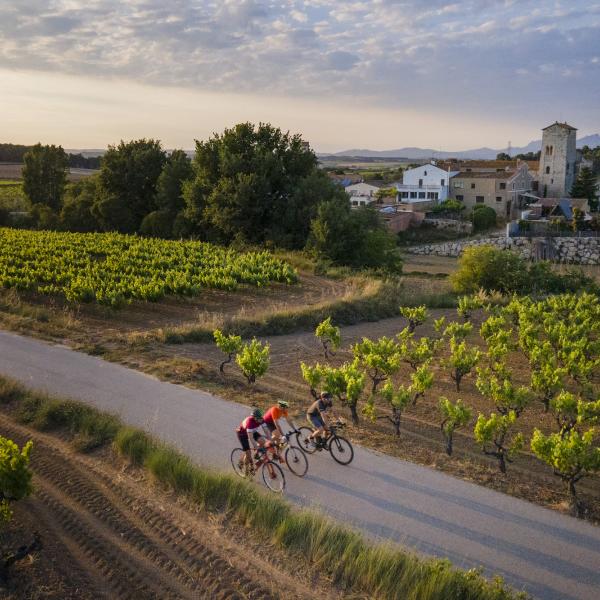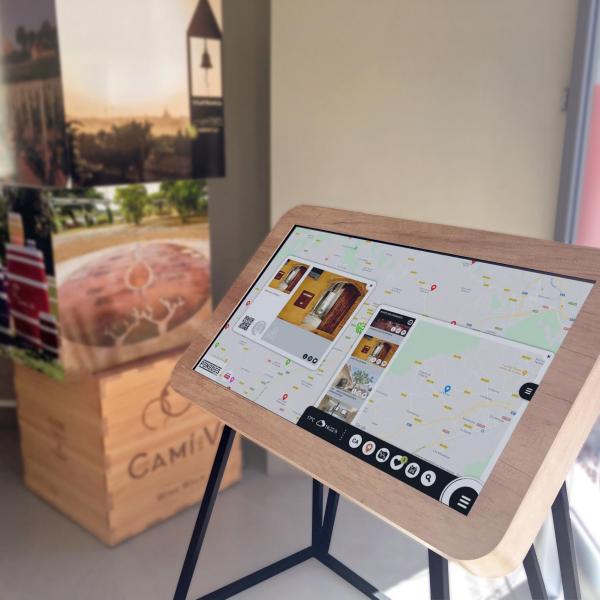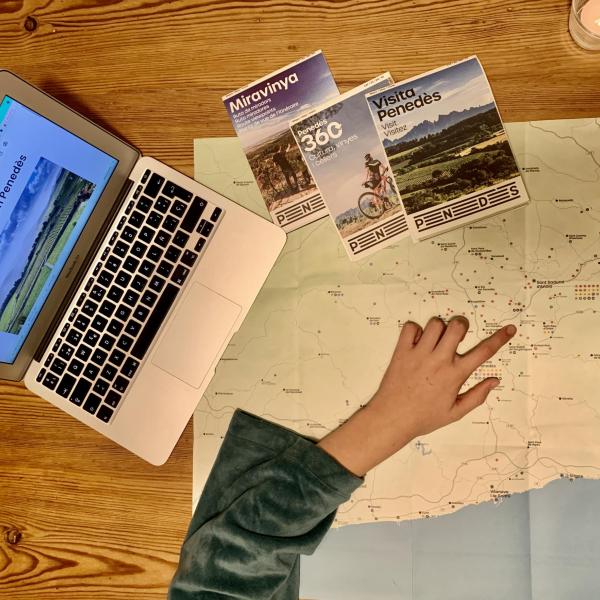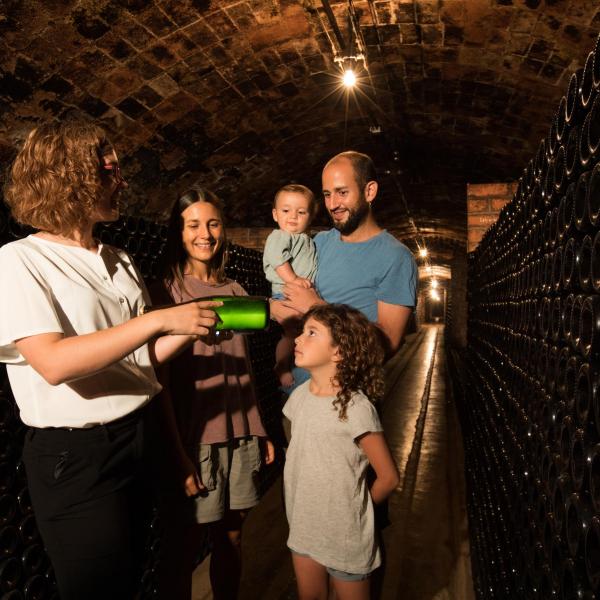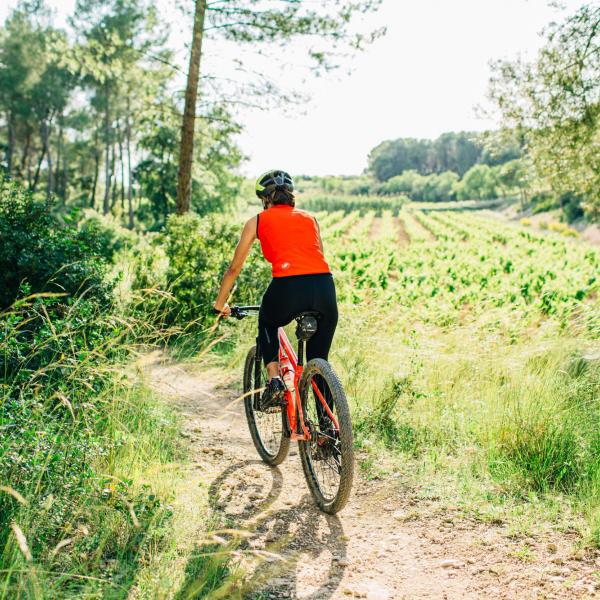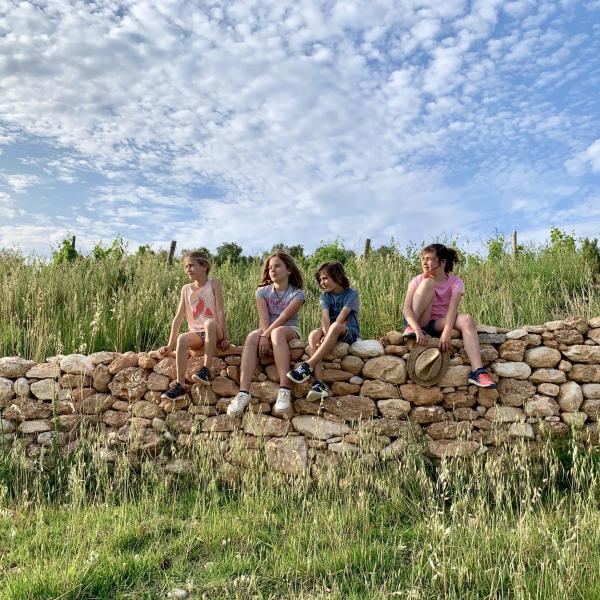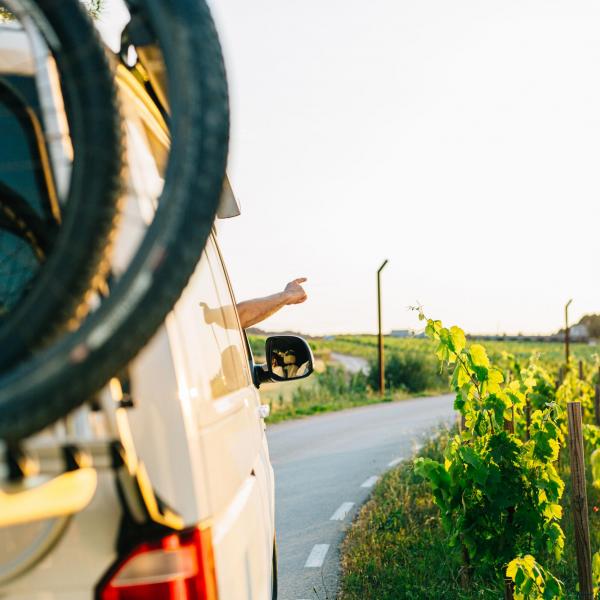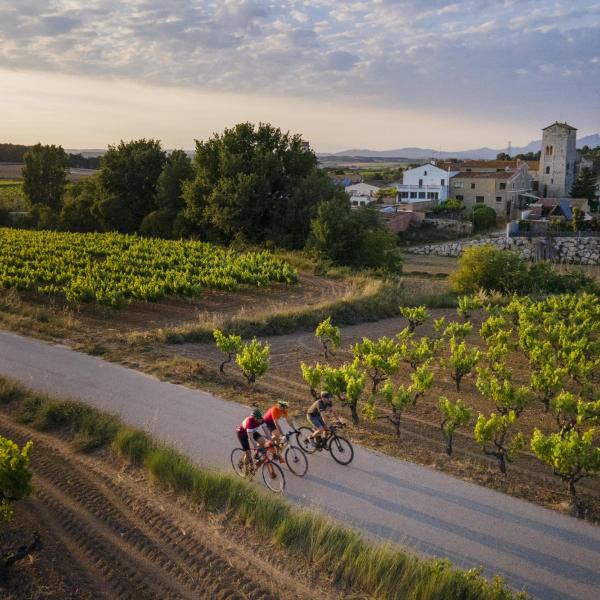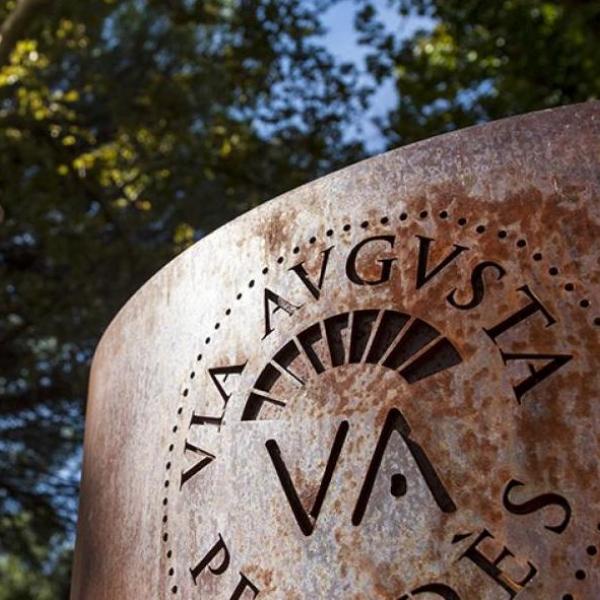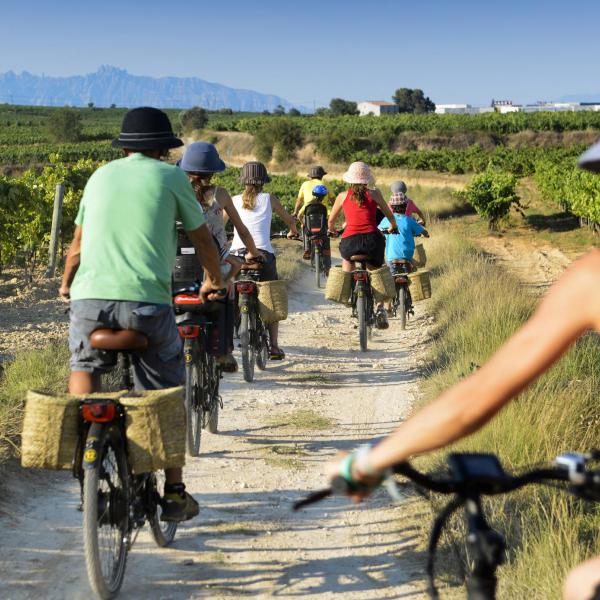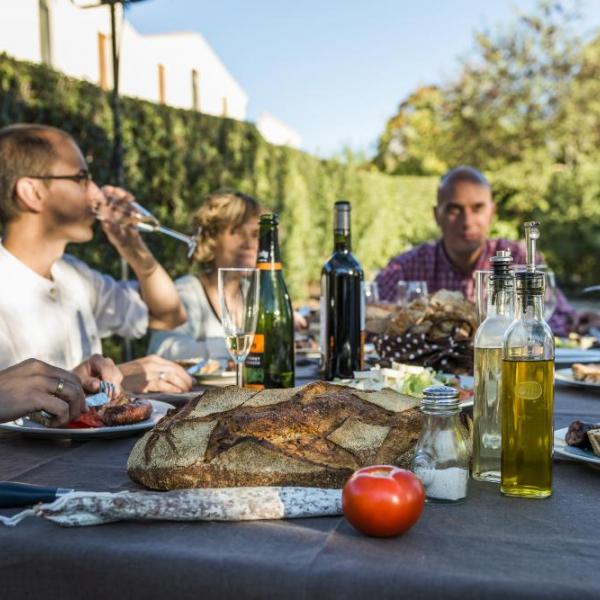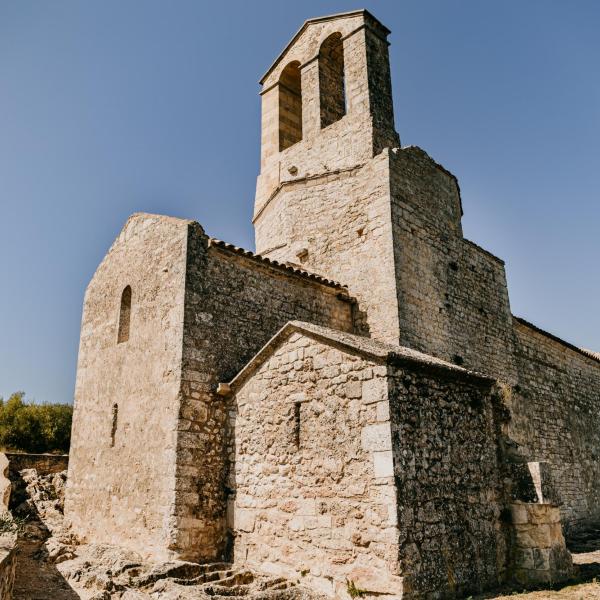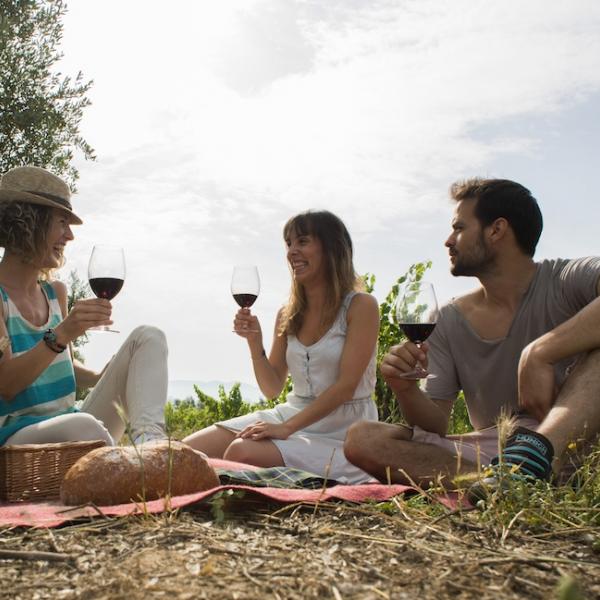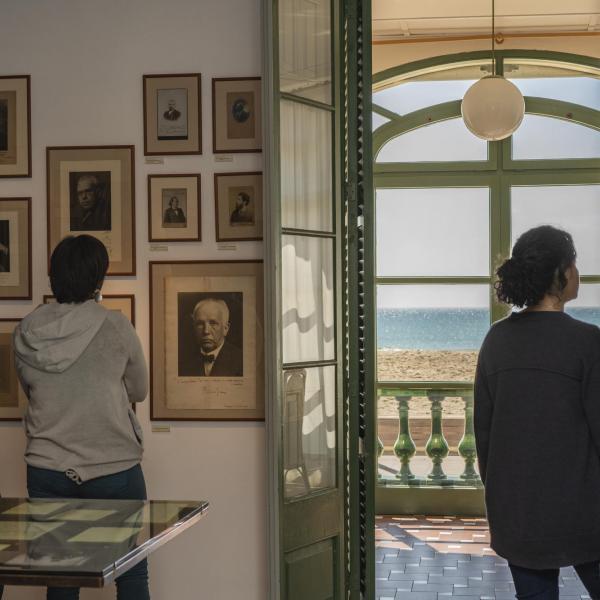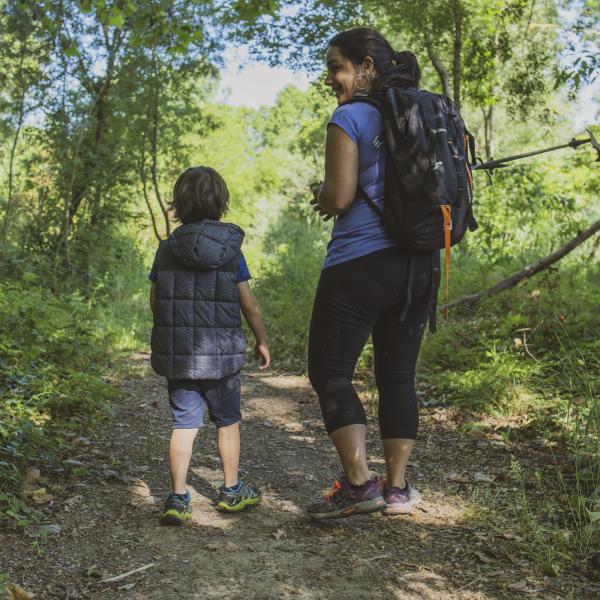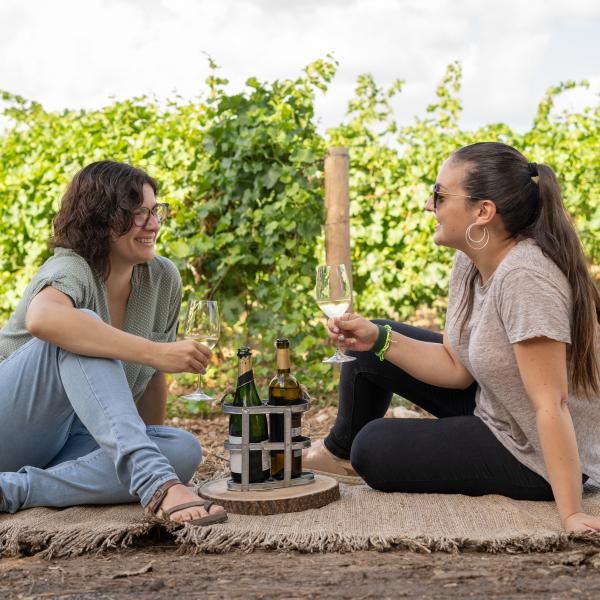Penedès on foot: 4 walking itineraries between nature and history
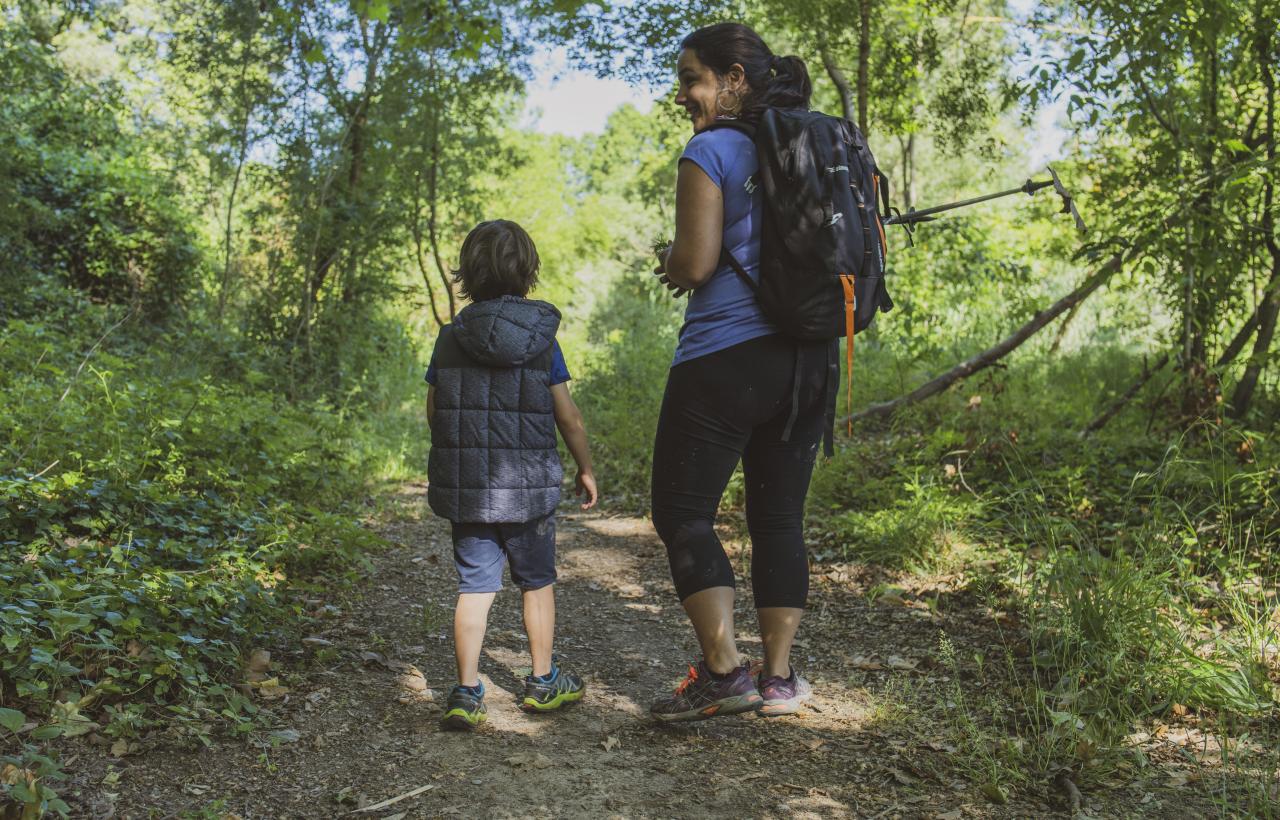
September 2024
The complete itinerary recreates a linear route along the ancient Via Augusta, the longest road built by the Romans in ancient Hispania, as it passed through the Penedès area. It has 7 stages of low difficulty, between 6 and 12 km, without sharp gradients.
The stage between Sant Sadurní d'Anoia and Lavern runs through a vineyard vallery crossed by some basins and streamflows, mostly dried out or very few remaining water. It is an easy route of 5.6km and 161m of elevation gain and can be done in an hour and a half without stops.
From the Sant Sadurní train station we head towards the center of the town; past the bridge, after the first houses, take the street on the left that goes down towards the Lavernó stream basin. We cross it and continue straight. We pass right in front of the Mas de la Riera and immediately take a path, which for approximately 1.3 km borders the stream, until we find the rise of the Cascarell incline. After a slightly steep coast, we arrive at a group of old famhouses called Can Batista.
We continue along the same path, which passes over the AVE line. Without leaving it, we arrive at the can Batlle stream. Just after the basin, we leave the Camí de Can Batista and take the track on the left that crosses, again, the stream Lavernó and a little further on, the basin of ca l'Artigues. We follow the path from ca l'Artigues until we cross the road BV-2429, a few meters from which is the church of Sant Pere Lavern. At this point you can connect with the next stage of the Via Augusta and keep going or call it a day and go to the Lavern-Subirats train station that is about 250 m away to go back to Sant Sadurní.
Each of the stages of the Via Augusta Penedès has a link to a train station, so you can return to the starting point if you want or move. The walks that can be done in either direction, on foot or by bike and which, linked together, allow you to travel longitudinally through the central spine of the Penedès region.
The Natural Parks network of Barcelona provides you with a wide range of itineraries and signposted routes, so you can easily take on different itineraries following the directions and information panels at the starting points.
This is a 6.5km circular route of moderate difficulty, as it starts in front of the entrance to the Monumental d'Olèrdola complex and descends to reach a negative gradient of 170m to climb right back up. It passes through the most prominent heritage elements of Olèrdola Park and some fountains such as Fontanilles, Ametlló and Alba.
The annual program of Guided Walks (passejades guiades) are outings aimed at a general and family audience that allow everyone to discover, through the guidance of experts who know the territory, the rich natural and cultural heritage of the natural spaces of our parks. There are night excursions, guided routes for the observation of migratory birds and nesting birds, walks dedicated to the geological landscape, fauna and flora, and walks to discover the built heritage and the human footprint on the territory.
You can download the PDF of the complete program (in Spanish or Catalana), or consult the calendar by date and park.
>> Annual schedule of guided walks of the Natural Parks Network
Sortirem del petit nucli de Sant Sebastià dels Gorgs fregant les velles parets del monestir, on podrem deixar el vehicle còmodament a l’aparcament públic que hi ha just a l’entrada del poble venint de Vilafranca.
Anirem a buscar, travessant el petit poble, el vell camí de Cantallops, tot enfilant-nos, sempre molt moderadament, seguint la carena de la serra dels Xops. Abans haurem travessat discretament els torrents de Baix i del Gendret, interessants exponents d’un dels elements que vertebren el paisatge de la plana del Penedès.
Anirem seguint la carena fins a Cantallops, un dels petits nuclis que, conjuntament amb Avinyó Nou, el més gran, formen el municipi d’Avinyonet del Penedès. Deixant les cases del poblet als nostres peus, ens enfilarem lleument cap al camí del Cap del Grill per una zona on predominen ja les bosquines i brolles. El còmode camí carener ens deixarà al bell mig del nucli d’Avinyó Nou, lloc propici per a un breu descans.
Des d’Avinyó Nou, ens dirigirem ara cap a la zona del torrent de la Font de la Canya, un bell racó solcat de vinyes i torrentets que ens ofereix la joia del jaciment ibèric on s’han trobat algunes de les restes més antigues associades al conreu de la vinya a la zona del Penedès. Per tant, la vinya aquí, forma part del paisatge des de temps molt i molt remots. Vist així, fa respecte. Quanta constància!
Molt a prop, ja un cop dirigits al camí d’Avinyó, que ens reconduirà decidit a Sant Sebastià dels Gorgs, ens trobem amb una altra petita joia, encara que aquesta del segle XVII: l’església de Sant Pere d’Avinyó, d’estil barroc, antiga parròquia de la contrada i que ja en substitueix una altra existent almenys des del segle X vinculada amb el desaparegut castell d’Avinyó.
Des d’aquí, i ja per acabar, només ens caldrà seguir el còmode camí d’Avinyó fins al nostre punt d’inici compartint un breu tram del camí que haurem fet a l’anada.
Circular route that stars in the little gem of Sant Sebastià dels Gorgs, the monastery, and it takes us to witness the landscape of vineyards in the Penedès valley up to the first precoastal hills. On our way back, from Avinyó Nou, we can take a look at the interesting Iberian site of La Font de la Canya, and also the building of Sant Pere d'Avinyó, the ancient spiritual center of the region.
We will leave the small village of Sant Sebastià dels Gorgs, walking next to the old walls of the monastery, where we can comfortably leave the car in the public car park that is right at the entrance to the town coming from Vilafranca.
Crossing the small town, we will take the old Cantallops path, while climbing, always very moderately, following the ridge of the Xops hill. Before that, we will have discreetly crossed the basins of Baix and Gendret. We will follow the ridge to Cantallops and we will leave the houses of the village at our feet, starting an uphill trek towards the path of Cap del Grill through an area where the woods and bushes change the previous landscape. The path will leave us in the middle of the Avinyó Nou village, a suitable place for a short rest.
From Avinyó Nou, we will now head to the Font de la Canya area, a beautiful corner furrowed by vineyards that hosts the Iberian archaeological site where some of the oldest vine cultivation remains have veen found. Therefore, the vineyard here has been part of the landscape since very, very remote times. Seen like this, it is respectful. What constancy!
Very close by, once we are on the Camí d'Avinyó, which will take us back to Sant Sebastià dels Gorgs, we find another little gem, this one from the 17th century: the church of Sant Pere d'Avinyó, a baroque style old parish that replaced another one existing at least since the 10th century and linked to the disappeared castle of Avinyó.
From here, and to finish this walk, we will only need to follow the easy path from Avinyó to our starting point, tracking back a short section of the path we will have walked previously.
Es tracta d’una ruta circular curta pels voltants del Molí del Sebastià a Sant Vicenç de Calders, de 2km i mig, molt accessible i amb recorregut senyalitzat, que forma part de Les Rutes de Pedra Seca del Baix Penedès. El seu inici és just al començament del Camí vell de Sant Vicenç al Vendrell, a 100 m de la sortida del poble i tot just abans d'arribar al cementiri. Es pot aparcar a la plaça del poble.
El principal atractiu de la ruta son els nombrosos elements de pedra seca, com barraques de diversa tipologia, cisternes i marges de vinya, cocons… També es pot observar la típica vegetació mediterrània i unes panoràmiques magnífiques del Mediterrani.
Com a lloc curiós i ahora interessant, passarem pel costat del Molí del Sebastià, complex format per la torre d'un antic molí fariner, l'era de batre i el corral del ramat amb la petita vivenda dels pastors. Era propietat de la cosina de l’artista Àngel Guimerà.
El Baix Penedès és una de les comarques amb un patrimoni de construccions de pedra seca més important de Catalunya, una tècnica de construcció tradicional considerada Patrimoni Cultural de la Humanitat per la UNESCO.
Discovering Penedès wine region on foot, or also by bike, specially during the spring and autumn seasons, is a good way to understand the contrasts of the destination and to enjoy the outdoors. In addition to the routes above, there are many other options for preparing a good day out.


